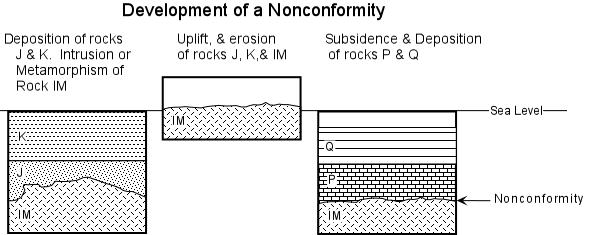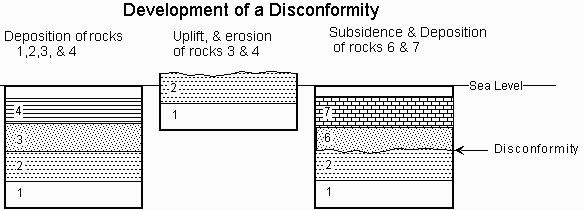Red Rocks Unconformity Earthcache EarthCache
Red Rocks Unconformity Earthcache
-
Difficulty:
-

-
Terrain:
-

Size:  (not chosen)
(not chosen)
Please note Use of geocaching.com services is subject to the terms and conditions
in our disclaimer.
In this earthcache you will learn about geologic
unconformities.
The earthcache is located in the Red Rocks Park, which is easily
accessed from Highway 470 to Highway 74 through Morrison. There are
numerous signs to direct you to the park. Proceed to the Visitor
Center. The earthcache is located very near the Top Circle Lot
parking area, close to the Visitor Center.
At the coordinates you will find a geologic unconformity.
An unconformity is a gap in the sequencing of the layers of rock.
Layers of sedimentary rock are laid down flat, parallel to the
earth's surface. This is the law of original horizontality. Younger
or new layers always overlie the older layers. This is the law of
superposition. An unconformity exists when this orderly stacking of
layers of rock is interrupted or broken.
There are four kinds of unconformities:
1. Angular unconformity
2. Nonconformity
3. Disconformity
4. Paraconformity
An angular unconformity occurs when the rocks on the top are level
and the rocks below are tilted. This was the type of unconformity
that was originally discovered in the 1780's by James Hutton in
Scotland. He noticed the unconformity and recognized that
significance of the amount of time that must have passed for the
formation of the unconformity. An angular unconformity occurs when
the oldest rocks are laid down, and then these rocks are tilted and
eroded flat, and the next set of newer rocks are laid down on top
of the flatened, but tilted rocks. See the drawing.

A nonconformity occurs when sedimentary rocks are laid down on top
of a non-sedimentary rock, like a lava flow or other type of
igneous rock, e.g. granite or gneiss.

A disconformity occurs when there is a gap in the succession of the
rock layers. The older rocks are laid down, but because of erosion,
some of the normally-expected subsequent layers of rock are
missing. Then newer layers of rock are formed on top of the older
rocks. The result is a sequencing of parallel rock layers that do
not contain all of the expected layers.

A paraconformity is a discontinuity that is not visible. These may
be difficult to observe and may discernable only from other
investigations. An example of a paraconformity would be a
unexpected gap in the normal layer of fossils contained in the
rocks.
At the coordinates you will see the unconformity. You can walk
right up to the plaque and examine the two types of rock. How does
the gneiss feel? It is rough or smooth? How does the sandstone
differ?
To log this earth cache you must do the following:
1. Determine the length of the gap in TIME between the formation of
the two types of rock of the unconformity.
2. Determine what type of unconformity this is.
3. Describe difference in the physical characteristics of the two
types of rock -- the gneiss and the sandstone.
4. What do you think caused the erosion that resulted in the large
gap in time?
Please send me an email with the answers. Please do NOT post the
answers in the log.
Additional Hints
(No hints available.)